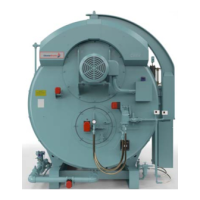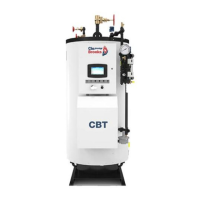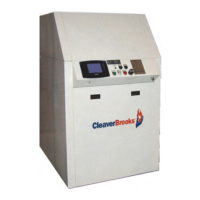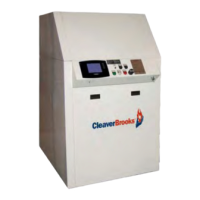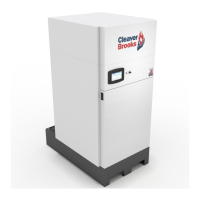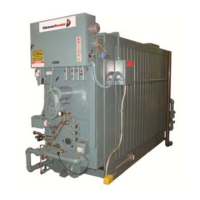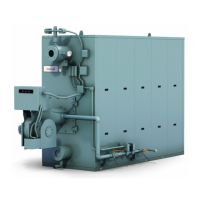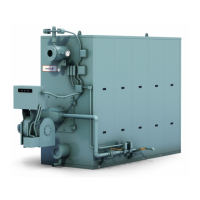750-368
CBEX Elite 100-1200 HP
6-7
6.10 — Gas Pilot Flame Adjustment
Although it is possible to visibly adjust the size of the pilot flame, it is preferable to obtain a micro amp or voltage
reading of the flame signal.
The correct voltage or micro amp readings can be found in the information supplied with the flame safeguard
system.
The program relay used may be of the type that provides message infor-
mation that includes a constant flame signal of DC voltage. In this case a
separate DC voltmeter is not required.
To measure and adjust the pilot:
1. When making a pilot adjustment, turn the manual-automatic switch to
“manual”. Open both the pilot cutoff cock and the pilot adjusting cock.
The main gas cock should remain closed.
The regulator in the pilot line, if provided, is to reduce the gas pressure to
suit the pilot’s requirement of between 5” to 10” WC. Regulator adjust-
ment is not critical, however, with a lower pressure the final adjustment of
the pilot flame with the adjusting cock is less sensitive.
FIGURE 6-5. Gas Pilot Adjusting Cock and Electrode
2. Connect the micro-ammeter.
3. Turn the burner switch “on.” Let the burner go through the normal pre-purge cycle. When the ignition trial
period is signaled, set the Run/Test switch on the flame safeguard to the “Test” position to stop the sequence.
4. If the pilot flame is not established within 10 seconds, turn off the burner switch. Repeat the lighting attempt.
5. When the pilot flame is established, and with the pilot adjusting cock wide open, remove the flame detector
from the burner plate. The pilot flame can then be observed through this opening.
6. To make the final adjustment, slowly close the gas pilot adjusting cock until the flame can no longer be seen
through the sight tube. Then slowly open the cock until a flame providing full sight tube coverage is observed.
NOTE: On an initial starting attempt, portions of the fuel lines may be empty and require “bleeding” time. It is better
to accomplish this with repeated short lighting trial periods with intervening purge periods than to risk prolonged fuel
introduction. If the pilot does not light after several attempts, check all components of the pilot system.
Wear a protective shield or suitable glasses and keep eyes sufficiently away from the sight tube opening. Never
remove the flame detector while the main burner is firing. Failure to follow these instructions could result in serious
injury or death.
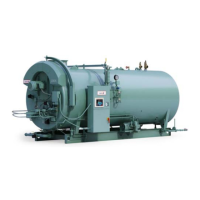
